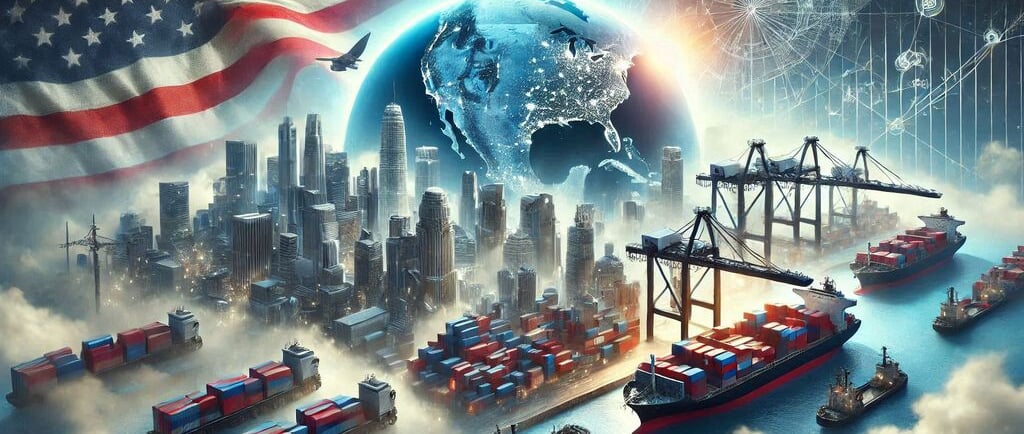Let us collaborate to foster global growth and development together.
Understanding the Impact of U.S. Trade Policies on Global Markets
Discover how U.S. trade policies shape global markets. Explore their effects on industries, economies, and trade relations worldwide.
USA
10/31/20244 min read


Understanding the Impact of U.S. Trade Policies on Global Markets
Meta Description: Discover how U.S. trade policies shape global markets. Explore their effects on industries, economies, and trade relations worldwide.
In today’s interconnected world, U.S. trade policies wield significant influence, impacting not only domestic industries but also the global economy. From tariffs and trade agreements to sanctions, these policies set the tone for international commerce. Understanding their implications can provide valuable insights for businesses and policymakers navigating the complexities of global trade.
How U.S. Trade Policies Shape Global Markets
The United States, as one of the world’s largest economies, plays a pivotal role in shaping global trade dynamics. Its trade policies can create ripple effects across industries, markets, and economies. But how exactly do they make such an impact?
Influencing Trade Balances:
U.S. trade policies directly affect the flow of imports and exports. For example, imposing tariffs on steel imports can protect domestic producers while simultaneously altering supply chains in other countries.Setting Standards:
U.S. trade agreements often set global standards for issues like labor practices, environmental regulations, and intellectual property rights. These standards influence trading partners’ policies and market behaviors.Shaping Geopolitical Alliances:
Trade policies can strengthen alliances with certain nations or create tension with others. The U.S.–China trade war is a recent example where trade policy significantly influenced diplomatic and economic relations.
Key Elements of U.S. Trade Policies
Tariffs and Duties
Tariffs are one of the most visible trade tools used by the U.S. government. They serve multiple purposes:
Protecting Domestic Industries: Higher tariffs on imported goods encourage consumers to buy domestically made products.
Revenue Generation: Tariffs contribute to government revenue, although they can also increase costs for consumers and businesses.
However, the consequences aren’t always straightforward. Take the Section 232 steel and aluminum tariffs introduced in 2018—while benefiting U.S. steelmakers, they raised prices for manufacturers dependent on these materials, including automakers and construction companies.
Trade Agreements
Bilateral and multilateral trade agreements form the foundation of U.S. trade relationships. These agreements aim to reduce trade barriers, promote fair competition, and increase market access for goods and services.
Examples of Landmark Trade Agreements:
USMCA (United States-Mexico-Canada Agreement): A modernization of NAFTA, this agreement updated labor and environmental standards while securing greater U.S. access to Canada’s dairy market.
Trans-Pacific Partnership (TPP): Although the U.S. exited this agreement in 2017, its legacy influenced other regional agreements.
Economic Sanctions
Sanctions are another critical tool in U.S. trade policy, used to achieve broader political or security objectives. By restricting trade with specific countries, companies, or individuals, sanctions exert significant pressure. For instance, U.S. sanctions on Iran limited its oil exports, influencing global energy markets.
Global Implications of U.S. Trade Policies
The impact of U.S. trade policies extends far beyond its borders, influencing industries and economies worldwide.
Impact on Emerging Markets
Many emerging economies depend on access to U.S. markets for their exports. Any policy changes—whether increased tariffs or stricter import regulations—can disrupt their economic growth. For example, American tariffs on Chinese goods under the U.S.–China trade war prompted China to diversify its trade relationships, seeking stronger ties with other regions, such as the European Union and Africa.
Supply Chain Disruptions
Changes in U.S. trade policies can significantly impact global supply chains. The COVID-19 pandemic coupled with U.S.-imposed tariffs on Chinese imports exposed vulnerabilities in global supply chains, leading companies to explore reshoring and nearshoring options.
Driving Innovation and Sustainability
On a positive note, U.S. trade policies often emphasize innovation and sustainability. Policies encouraging green technologies and renewable energy adoption incentivize global industries to invest in cleaner production methods.
Challenges for Businesses
Navigating the complexities of U.S. trade policies can be challenging, especially for businesses operating on an international scale.
Compliance and Costs
Understanding and complying with changing tariffs, duties, and regulatory standards can increase operational costs for businesses. For small and medium enterprises (SMEs), these challenges are particularly daunting.
Uncertainty in Trade Relations
Frequent policy shifts, often driven by political changes, create uncertainty. Businesses must continuously adapt to changing trade rules, making long-term planning difficult. For instance, abrupt changes in policies related to steel tariffs have left manufacturers scrambling to secure affordable materials.
Opportunities Amidst Challenges
While U.S. trade policies pose challenges, they also open doors for new opportunities:
Diversification of Markets: Businesses affected by U.S. tariffs can expand into other markets. For instance, Asian and European manufacturers have leveraged disruptions caused by U.S. policies to increase their presence in African and Middle Eastern markets.
Investing in Innovation: Policy emphasis on innovation fosters investment in advanced manufacturing and technology sectors, driving growth domestically and globally.
How Businesses Can Navigate U.S. Trade Policies
Stay Informed:
Regularly monitor changes to U.S. trade policies and analyze how they impact your industry. Reliable sources like the Office of the U.S. Trade Representative (USTR) can provide up-to-date information.Diversify Supply Chains:
Relying heavily on a single source country increases vulnerability. Diversify suppliers to mitigate risks associated with tariffs or sanctions.Consult Trade Experts:
Engage trade advisors or legal experts to ensure compliance and develop strategies to optimize cross-border operations.Leverage Technology:
Use AI and IoT to enhance supply chain visibility and respond to trade policy changes in real time.
Conclusion
U.S. trade policies play a critical role in shaping global markets, creating both challenges and opportunities for businesses worldwide. Understanding their nuances and staying proactive in adapting to changes can help businesses thrive in the dynamic landscape of international trade.
Are you prepared to navigate these shifting trade currents? Share your thoughts in the comments, and check out our articles on “Global Supply Chain Trends in 2024” and “The Role of Technology in Trade Compliance” for more insights.
Let’s tackle these trade challenges together!
Innovation
Cutting-edge solutions for industrial efficiency and productivity.
© 2024. All rights reserved.


